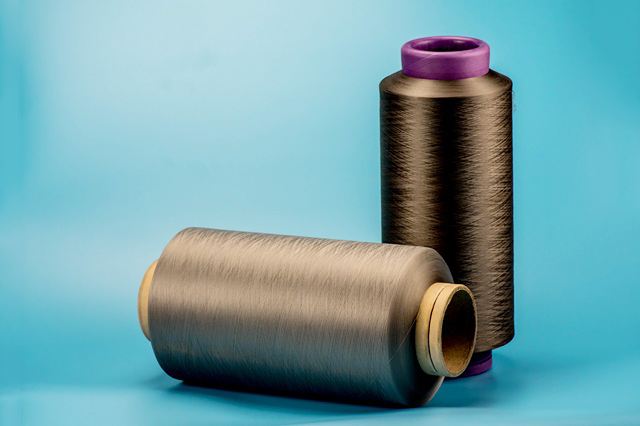Advantages of Graphene Nylon Filament
Graphene is a planar thin film composed of carbon atoms arranged in a hexagonal honeycomb lattice with sp? Hybridization trajectories. It is a two-dimensional material with only one atomic layer thickness. Nylon composite fiber, also known as biomass graphene or nylon composite fiber, is a composite fiber prepared by blending graphene with thermoplastic resin containing amide groups.
The matrix material of graphene nylon filament fiber is high-quality polyamide chips. The pre made masterbatch process is used to uniformly disperse biomass graphene in the polyamide chips, and then melt spinning and post spinning treatment are carried out to obtain nylon fibers containing biomass graphene. This process effectively solves the problem of biomass graphene with low density, high surface energy, easy agglomeration, and difficulty in mixing evenly in slicing. Thus, the unique functions of biomass graphene have been incorporated into nylon fibers. Compared with traditional nylon fibers, graphene nylon filament has significantly improved properties in far-infrared, antibacterial, and UV resistance. Graphene filament has high wear resistance; Moisture absorption and breathability; Superconducting, anti-static, waterproof, windproof and other functional advantages.

Today, let's learn about the advantages of graphene nylon filament:
1. Ultra tensile strength and low elongation;
2. Intrinsic flame retardant properties;
3. Antibacterial and bacteriostatic properties;
4. Antistatic properties;
5. Ultra high thermal conductivity;
6. Outstanding low-temperature far-infrared function;
7. Superior UV resistance.
Due to the advantageous effects of graphene, it plays a decisive role in promoting the research and application of graphene in industries such as textiles, chemical fibers, and clothing, and facilitating the high-tech transformation and upgrading of the textile, clothing, and chemical fiber industries.
Article source: Nylon colored yarn
-
05-27
The reason why fabrics containing spandex are prone to yellowing
Spandex is a commonly used fiber variety in our daily lives, characterized by good elasticity, low fineness, high elastic modulus (cracking elongation can reach 400-800), and low specific gravity. Spa
-
04-24
Colored non dyed nylon with synthetic fiber raw material
The current conventional fiber coloring mostly uses yarn dyeing method, which has long process, high loss, high cost, and the product has color difference and low color wash fastness. Yarn is prone to
-
03-26
What are the characteristics of non dyed spandex?
Non dyed spandex has also been widely used in recent years. Non dyed spandex fiber can be blended with fibers such as nylon, polyester, acrylic, cotton, wool, etc., which can give fabrics excellent el
-
02-24
The influence of yarn structure on fabrics
The basic characteristics of yarn include its appearance and shape, twisting characteristics, fiber transfer and distribution characteristics in the yarn, as well as the surface fuzz and internal loos
